Leadership > EXAM > Leadership Roles and Management Functions in Nursing 10th Edition Marquis Huston Test Bank (All)
Leadership Roles and Management Functions in Nursing 10th Edition Marquis Huston Test Bank
Document Content and Description Below
Leadership Roles and Management Functions in Nursing 10th Edition Marquis Huston Test Bank Chapter 1 Decision Making, Problem Solving, Critical Thinking, and Clinical Reasoning: Requisites for succ... essful leadership and management 1. What statement is true regarding decision making? A) It is an analysis of a situation B) It is closely related to evaluation C) It involves choosing between courses of action D) It is dependent upon finding the cause of a problem Ans: C Feedback: Decision making is a complex cognitive process often defined as choosing a particular course of action. Problem solving is part of decision making and is a systematic process that focuses on analyzing a difficult situation. Critical thinking, sometimes referred to as reflective thinking, is related to evaluation and has a broader scope than decision making and problem solving. 2. What 1. A) Its need for implementation time 2. B) Its lack of a step requiring evaluation of results 3. C) Its failure to gather sufficient data 4. D) Its failure to evaluate alternatives Ans: A Feedback: The traditional problem-solving model is less effective when time constraints are a consideration. Decision making can occur without the full analysis required in problem solving. Because problem solving attempts to identify the root problem in situations, much time and energy are spent on identifying the real problem. 3. Which of the following statements is true regarding decision making? 1. A) Scientific methods provide identical decisions by different individuals for the same problems 2. B) Decisions are greatly influenced by each persons value system 3. C) Personal beliefs can be adjusted for when the scientific approach to problem solving is used 4. D) Past experience has little to do with the quality of the decision Ans: B Feedback: Values, life experience, individual preference, and individual ways of thinking will influence a persons decision making. No matter how objective the criteria will be, value judgments will always play a part in a persons decision making, either consciously or subconsciously. is a weakness of the traditional problem-solving model? Page 1 4. What influences the quality of a decision most often? A) The decision makers immediate superior B) The type of decision that needs to be made C) Questions asked and alternatives generated D) The time of day the decision is made Ans: C Feedback: The greater the number of alternatives that can be generated by the decision maker, the better the final decision will be. The alternatives generated and the final choices are limited by each persons value system. 5. What 1. A) Good decision makers are usually right-brain, intuitive thinkers 2. B) Effective decision makers are sensitive to the situation and to others 3. C) Good decisions are usually made by left-brain, logical thinkers 4. D) Good decision making requires analytical rather than creative processes Ans: B Feedback: Good decision makers seem to have antennae that make them particularly sensitive to other people and situations. Left-brain thinkers are typically better at processing language, logic, numbers, and sequential ordering, whereas right-brain thinkers excel at nonverbal ideation and holistic synthesizing. does knowledge about good decision making lead one to believe? 6. What 1. A) The planning process of management 2. B) The evaluation phase of the executive role 3. C) One step in the problem-solving process 4. D) Required to justify the need for scarce items Ans: C Feedback: Decision making is a complex, cognitive process often defined as choosing a particular course of action. Decision making, one step in the problem-solving process, is an important task that relies heavily on critical thinking and clinical reasoning skills. is the best definition of decision making? Page 2 7. If decision making is triggered by a problem with what does it end? 1. A) An alternative problem 2. B) A chosen course of action 3. C) An action that guarantees success 4. D) A restatement of the solution Ans: B Feedback: A decision is made when a course of action has been chosen. Problem solving is part of decision making and is a systematic process that focuses on analyzing a difficult situation. Problem solving always includes a decision-making step. 8. Why do our values often cause personal conflict in decision making? 1. A) Some values are not realistic or healthy 2. B) Not all values are of equal worth 3. C) Our values remain unchanged over time 4. D) Our values often collide with one another Ans: D Feedback: Values, life experience, individual preference, and individual ways of thinking will influence a persons decision making. No matter how objective the criteria will be, value judgments will always play a part in a persons decision making, either consciously or subconsciously. 9. Which statement is true concerning critical thinking? 1. A) It is a simple approach to decision making 2. B) It is narrower in scope than decision making 3. C) It requires reasoning and creative analysis 4. D) It is a synonym for the problem-solving process Ans: C Feedback: Critical thinking has a broader scope than decision making and problem solving. It is sometimes referred to as reflective thinking. Critical thinking also involves reflecting upon the meaning of statements, examining the offered evidence and reasoning, and forming judgments about facts. Page 3 10. How do administrative man managers make the majority of their decisions? 1. A) After gathering all the facts 2. B) In a manner good enough to solve the problem 3. C) In a rational, logical manner 4. D) After generating all the alternatives possible Ans: B Feedback: Many managers make decisions that are just igood enoughi because of lack of time, energy, or creativity to generate a number of alternatives. This is also called isatisficing.i Most people make decisions too quickly and fail to systematically examine a problem or its alternatives for solution. 11. What 1. A) Is evaluation necessary when using a good decision-making model? 2. B) Can evaluation be eliminated if the problem is resolved? 3. C) Will the effectiveness of the decision maker be supported? 4. D) Will the evaluation be helpful in increasing ones decision-making skills? Ans: D Feedback: The evaluation phase is necessary to find out more about ones ability as a decision maker and to find out where the decision making was faulty. 12. Which statement concerning the role of the powerful in organizational decision making is true? 1. A) They exert little influence on decisions that are made 2. B) They make decisions made that are in congruence with their own values 3. C) They allow others to make the decisions however they wish 4. D) They make all the important decisions with consideration to others Ans: B Feedback: Not only does the preference of the powerful influence decisions of others in the organization, but the powerful are also able to inhibit the preferences of the less powerful. Powerful people in organizations are more likely to have decisions made that are congruent with their own preferences and values. needs to be considered in evaluating the quality of ones decisions? Page 4 13. One of the nurses on the unit said, iMale patients have a low threshold for pain.i This is an example of what type of illogical thinking? A) B) C) D) Ans: Feedback: This type of icrookedi thinking occurs when one believes that because A has a particular characteristic, every other A also has the same characteristic. This kind of thinking is exemplified when stereotypical statements are used to justify arguments and decisions. 14. What effect of organizational power on decision making is often reflected in the tendency of staff? 1. A) Making decisions independent of organizational values 2. B) Not trusting others to decide 3. C) Desiring personal power 4. D) Having private beliefs that are separate from corporate ones Ans: D Feedback: The ability of the powerful to influence individual decision making in an organization often requires adopting a private personality and an organizational personality. Affirming the consequences Arguing from analogy Deductive reasoning Overgeneralizing D 15. What 1. A) Examine alternatives visually and compare each against the same criteria 2. B) Quantify information 3. C) Plot a decision over time 4. D) Predict when events must take place to complete a project on time Ans: A Feedback: A decision grid allows one to visually examine the alternatives and compare each against the same criteria. Although any criteria may be selected, the same criteria are used to analyze each alternative. does a decision grid allow the decision maker to do? [Show More]
Last updated: 1 year ago
Preview 1 out of 86 pages

Reviews( 0 )
Document information
Connected school, study & course
About the document
Uploaded On
Oct 17, 2022
Number of pages
86
Written in
Additional information
This document has been written for:
Uploaded
Oct 17, 2022
Downloads
0
Views
60


.png)




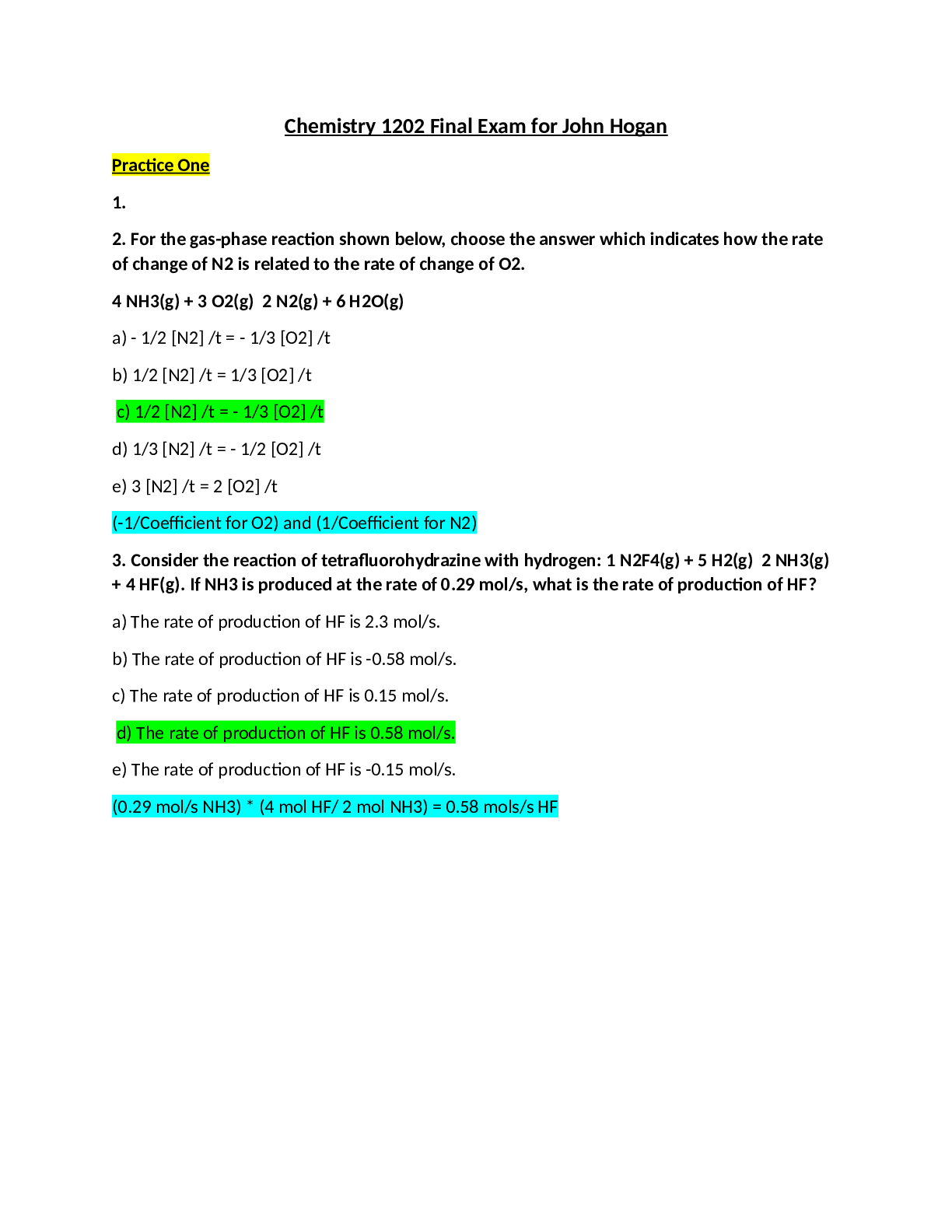
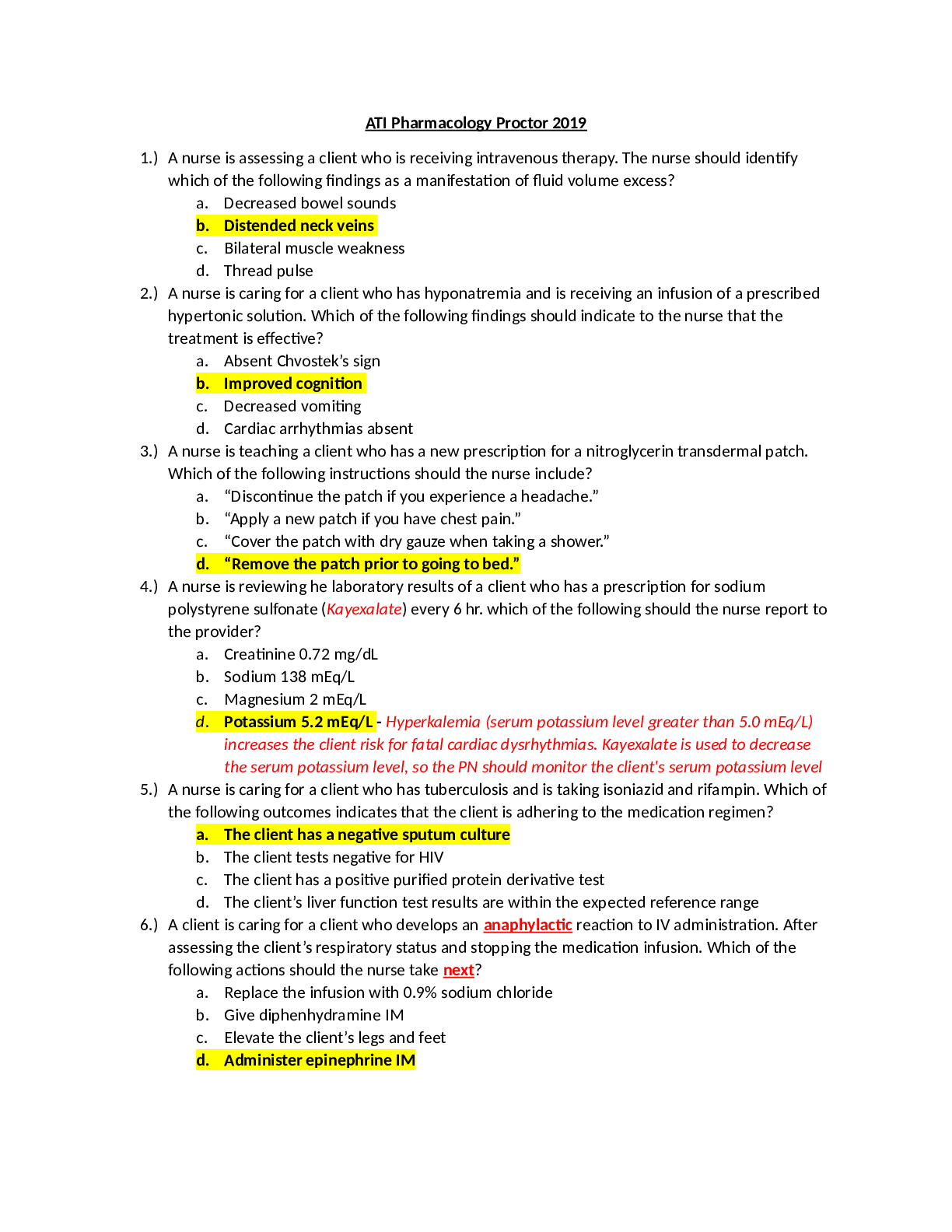
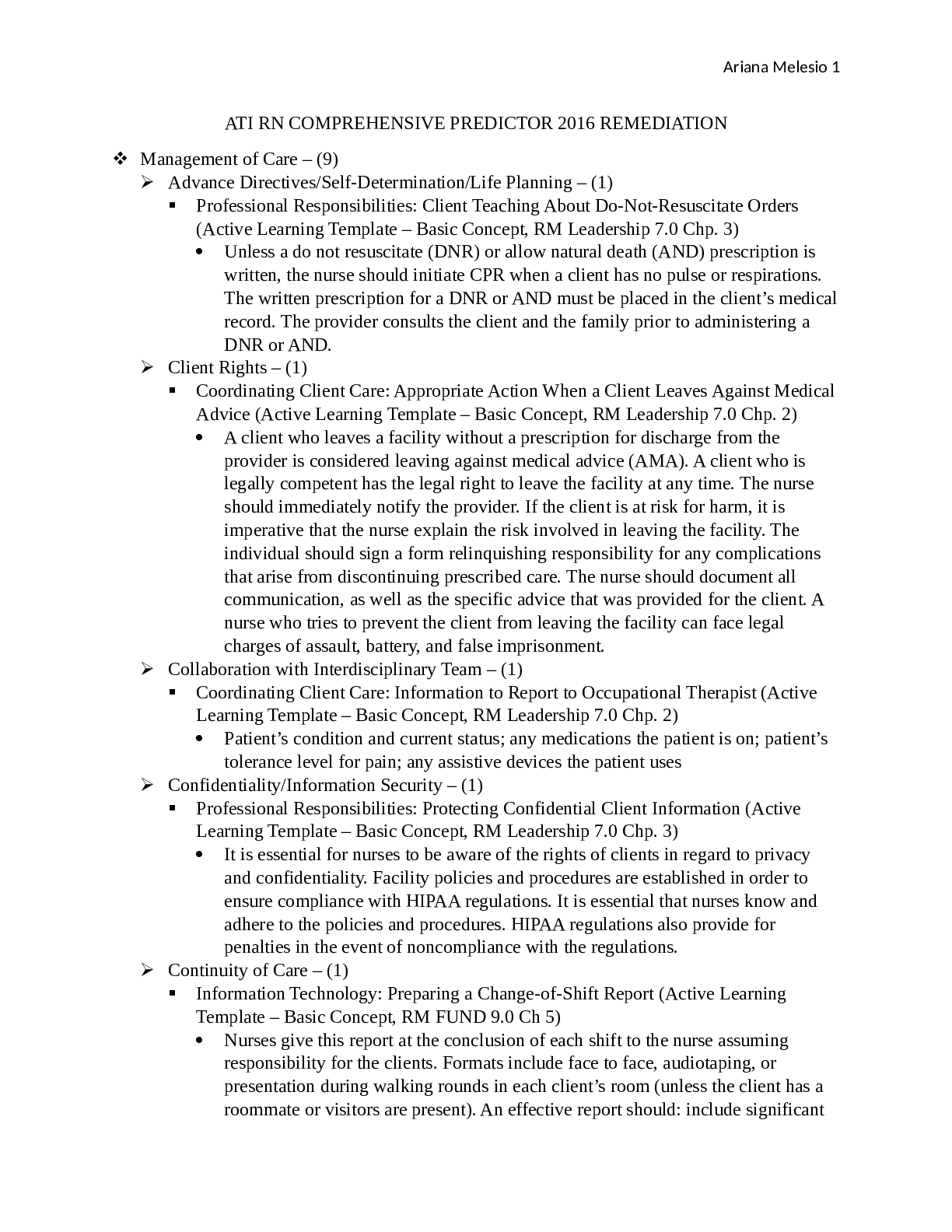



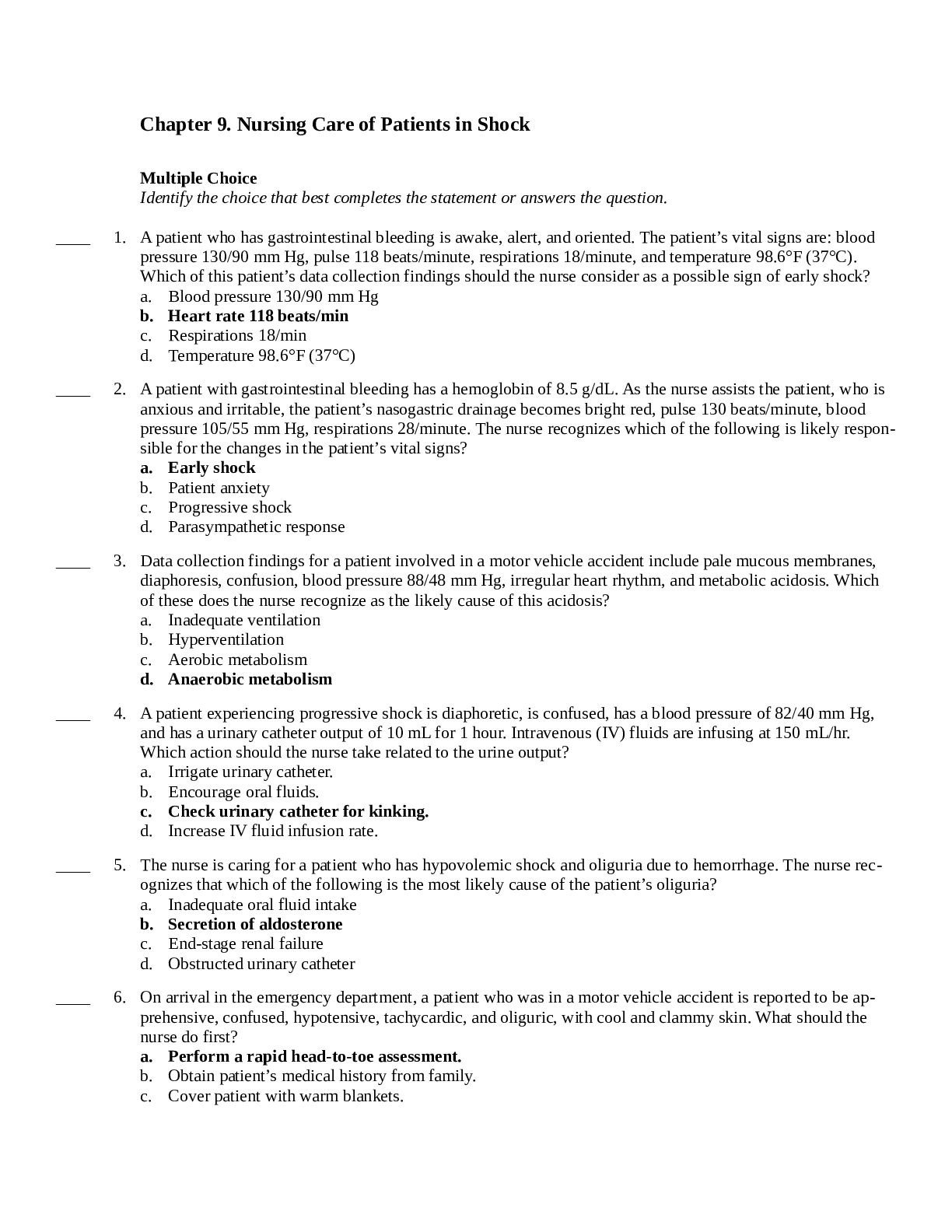


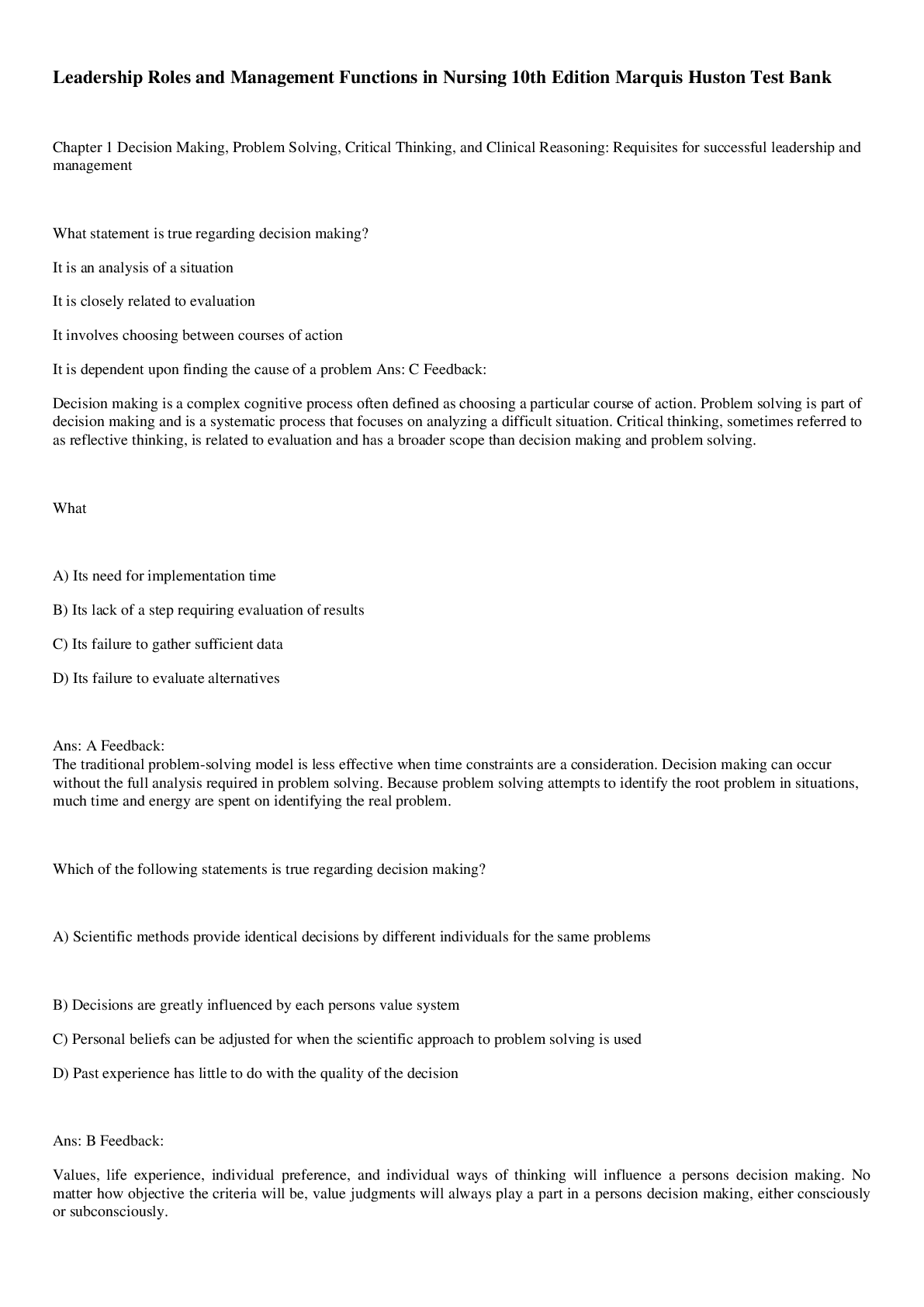
.png)


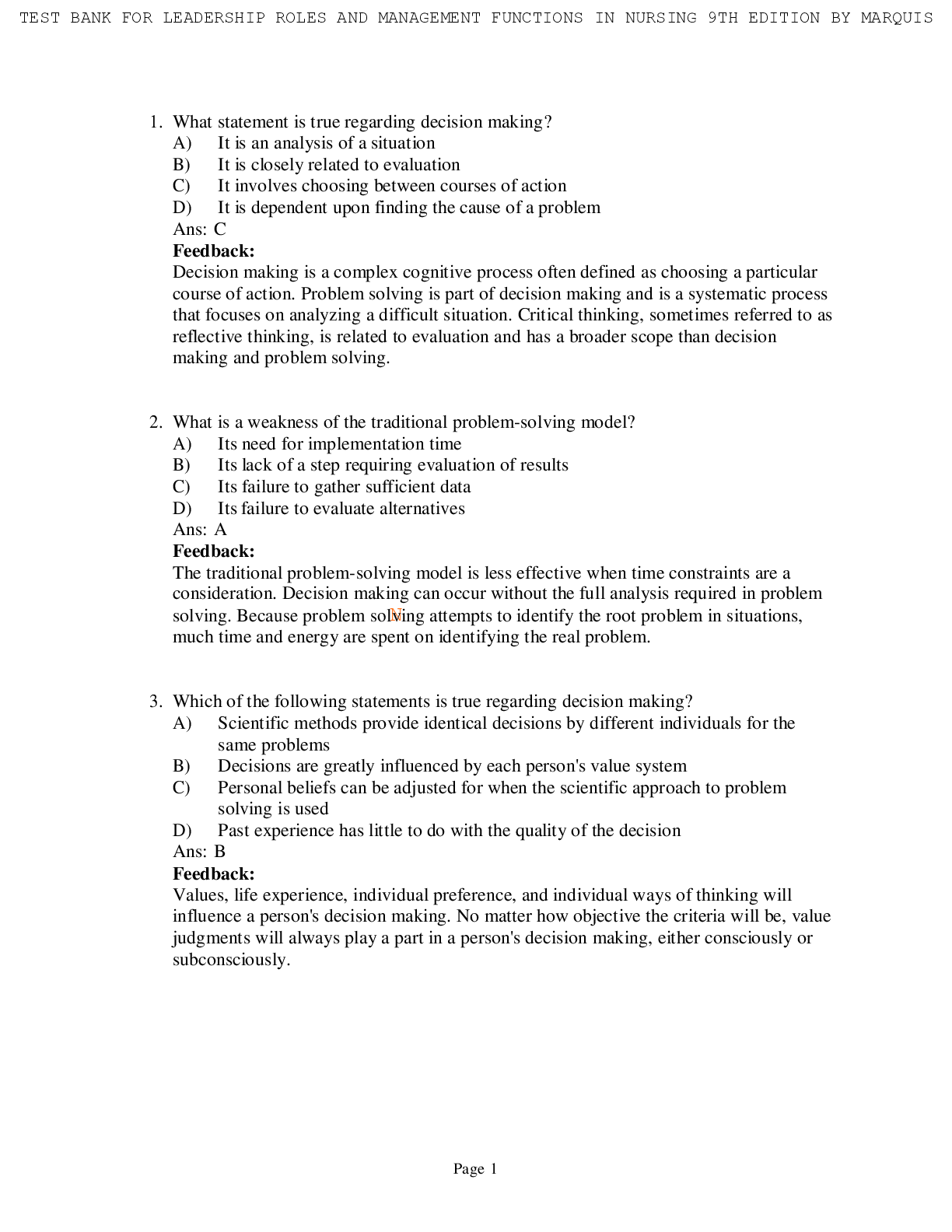

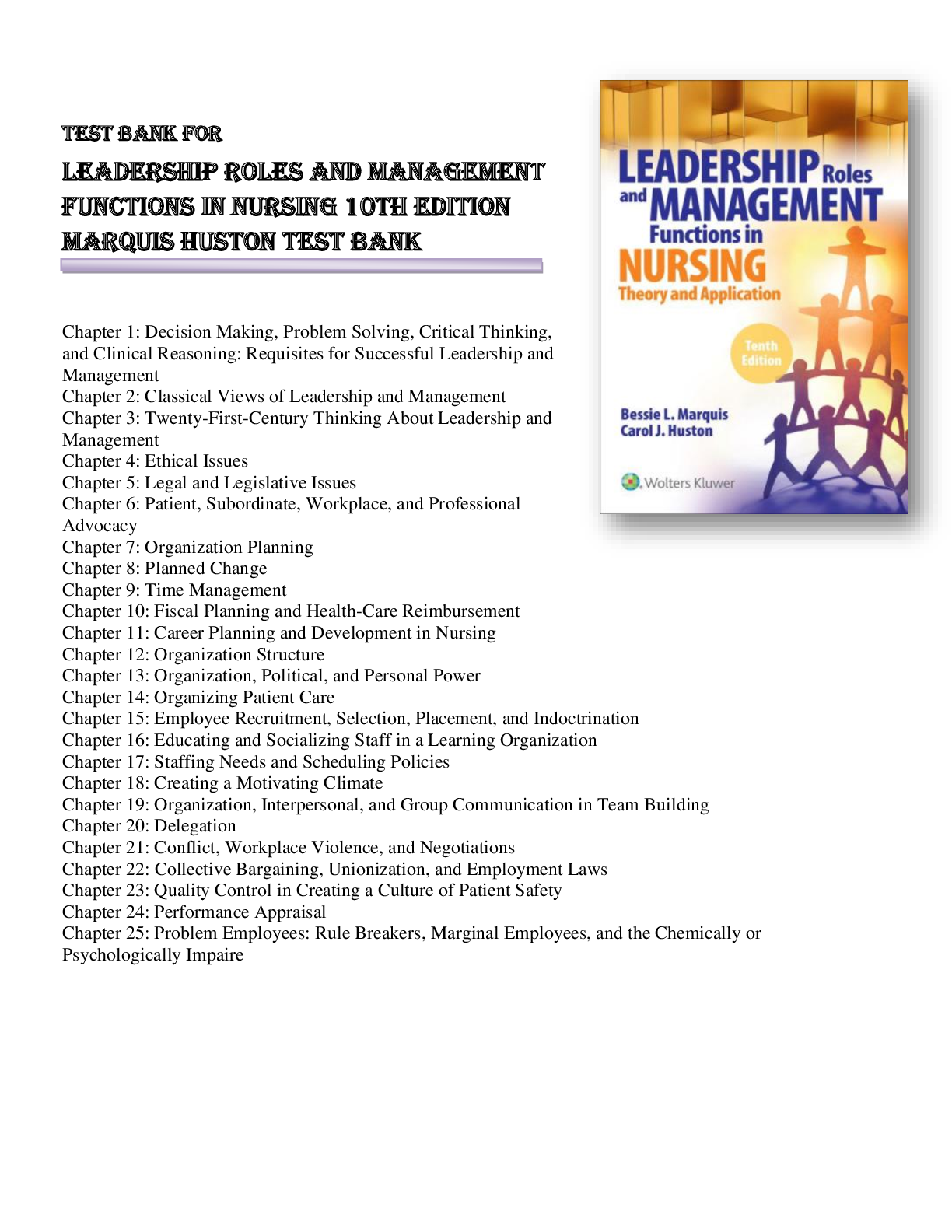
.png)


